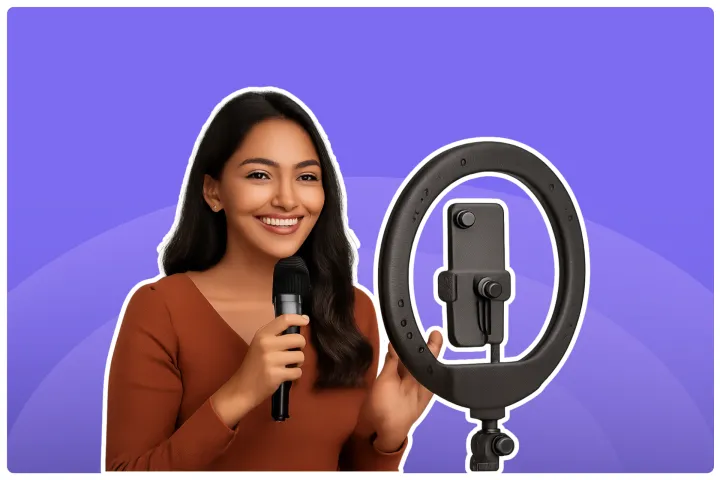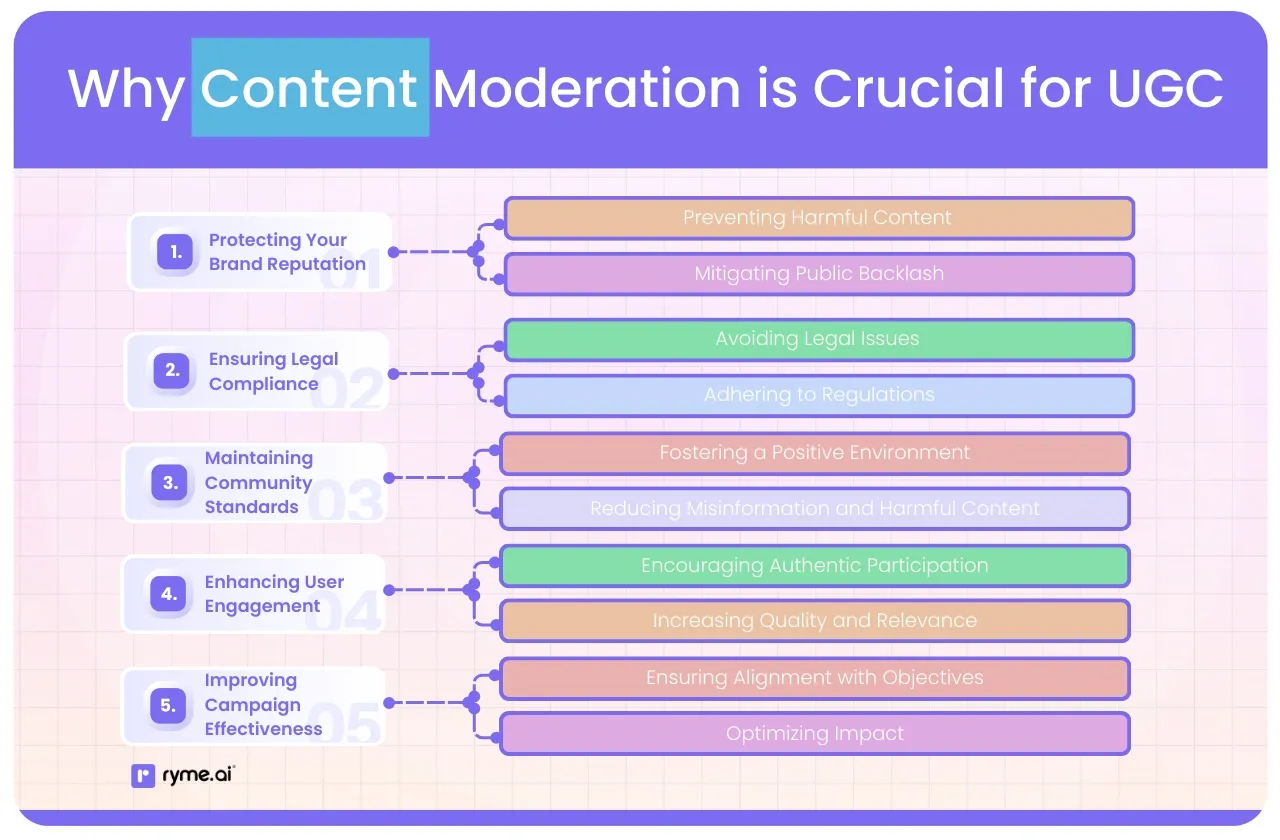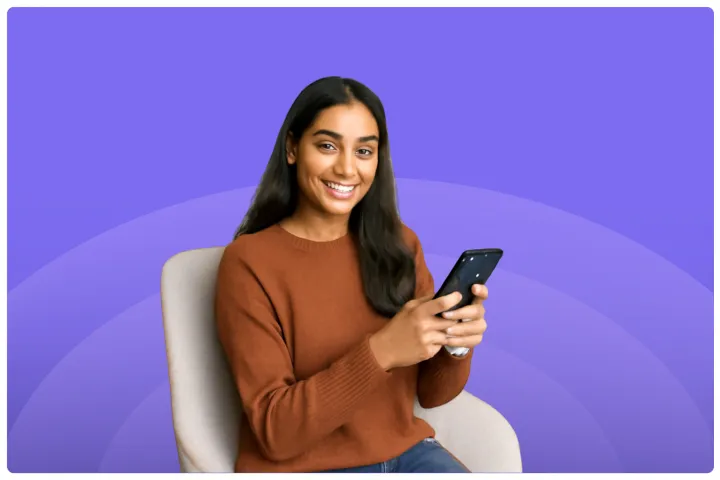Why Is Content Moderation Important For User Generated Campaigns
Explore the importance of content moderation in user-generated campaigns. Find out how it protects your brand and fosters a positive user experience.

You've seen the magic of User Generated Content (UGC). Your customers are your biggest fans, creating amazing, authentic content that sings your praises. You're thinking about launching a UGC campaign to harness this power. That's a fantastic idea! UGC can skyrocket your brand's reach, build incredible trust, and create a vibrant community.
But wait a minute. Before you dive headfirst into the exciting wave of customer content, let's talk about something super important: content moderation. It might not sound as glamorous as viral hashtags, but trust us, it's the secret sauce to a successful and stress-free UGC campaign.
Think of it as the friendly bouncer at your brand's exclusive online party. You want everyone to have a great time, but you also need to make sure things don't get out of hand. Let's get into why this is a non-negotiable for your brand.
What is User Generated Campaign Moderation?
Simply put, user-generated campaign moderation is the process of reviewing and managing the content your users submit for your campaigns. This means checking every photo, video, comment, and review to ensure it aligns with your brand's values and guidelines before it goes public. You're essentially curating the conversation around your brand.
Why Is Content Moderation Important For User Generated Campaigns?
Running a UGC campaign without moderation is like handing over your brand's microphone to a stranger in a crowded room. Risky, right? Here’s why a solid moderation strategy is your best friend.

1) Protecting Your Brand Reputation
Your brand's reputation is everything. You've worked hard to build it, and it only takes one inappropriate or offensive post to cause serious damage. Imagine a user sharing content that's hateful, spammy, or just plain weird, and it's associated with your campaign hashtag. Yikes. 😬
Moderation acts as your brand's shield, filtering out harmful content and ensuring that what your audience sees is positive, on-brand, and safe.
A 2024 report highlighted that effective content moderation is no longer just a defensive move; it's a fundamental aspect of building brand trust. When users feel safe, they're more likely to engage with your brand.
2) Ensuring Legal Compliance
The internet has rules, and when you're running a campaign, you need to play by them. User-generated content can sometimes stray into tricky legal territory. Think copyright infringement (using someone else's music in a video), privacy violations, or even defamatory statements.
As the brand hosting the campaign, you could be held responsible for the content you promote. A clear moderation process, where you check for these issues, helps you avoid legal headaches and hefty fines. It's about being proactive, not reactive.
3) Maintaining Community Standards
Every brand has a community, and every community needs standards to thrive. Your UGC campaign is an extension of this community. Clear guidelines and consistent moderation help create a positive and respectful environment where your genuine fans feel comfortable participating.
When you let spammy or negative content slide, you risk alienating the very people you want to attract. By curating the content, you're telling your community, "We care about this space, and we care about you."
4) Enhancing User Engagement
You might think that strict moderation could stifle engagement, but the opposite is often true. A well-moderated space is an engaging one. When users see that you're actively involved – liking, commenting on, and featuring high-quality UGC – they're more motivated to participate.
Recent 2025 data shows that 93% of marketers believe UGC performs significantly better than branded content.
When your audience knows their quality contributions will be seen and appreciated, they're more likely to put in the effort. It’s about celebrating your creators and encouraging more of the content you love.
5) Improving Campaign Effectiveness
Ultimately, you're running a UGC campaign to achieve a goal – be it brand awareness, more sales, or higher engagement. Moderation helps you stay on track. By filtering out irrelevant or low-quality submissions, you ensure that the content you showcase is top-notch and aligned with your campaign's message.
This focus on quality makes your campaign more appealing and effective. It's the difference between a cluttered, confusing campaign and a powerful, cohesive one that achieves its objectives.
How to Implement Effective Content Moderation in User Generated Campaigns
Feeling motivated to set up your moderation strategy? Awesome! Here’s how you can do it effectively.

1) Establish Clear Guidelines
Your users aren't mind-readers. You need to tell them exactly what you're looking for. Create a simple, easy-to-understand set of guidelines for your campaign.
- Do's: "Show us your creative way of using our product!" "Keep it positive and fun!"
- Don'ts: "No offensive language or symbols." "Please don't include other brand logos." "Make sure you have the rights to any music you use."
The clearer your rules, the better the submissions you'll receive.
2) Utilize Automated Tools
Manually reviewing thousands of posts can be a massive task. This is where technology comes in. Automated tools can pre-filter content based on keywords, image recognition, and other criteria. They can flag potentially problematic posts for your team to review, saving you a ton of time and effort.
3) Incorporate Human Oversight
Automation is great, but it's not foolproof. AI can't always understand context, sarcasm, or cultural nuances. That's why a human touch is essential. Have a dedicated person or team to review flagged content and make the final call. This combination of AI efficiency and human intelligence is the gold standard for moderation.
4) Monitor and Analyze Content
Moderation isn't just about filtering. It's also a fantastic source of insight. Pay attention to the kind of content you're receiving. What are the common themes? What are your users saying? This information is pure gold for understanding your audience and refining your marketing strategy.
5) Engage with the Community
Make your moderation process a two-way street. When you feature a user's post, celebrate them! Tag them, thank them, and make them feel like a star. If you have to remove a post because it violates the guidelines, have a templated, friendly message ready to explain why. This transparency builds trust and educates your community for future submissions.
User Generated Campaign Moderation: Case Studies and Real-World Examples
Let's look at how this plays out in the real world.
The Cautionary Tale: Coca-Cola's #MakeItHappy Campaign
Back in 2015, Coca-Cola launched a campaign with a positive message: turn negative online messages into cute ASCII art. Users were asked to reply to mean tweets with the #MakeItHappy hashtag. The intention was great, but the execution lacked robust moderation. An automated system was set up to generate the art.
Gawker, a media outlet, decided to test the system by creating a bot that tweeted lines from Adolf Hitler's "Mein Kampf" with the campaign hashtag. Coke's automated system, unable to understand the context, turned these hateful words into cheerful images, which were then tweeted from the official Coca-Cola account. The backlash was swift, and Coke had to pull the campaign.
The lesson: Automation without sufficient human oversight and contextual understanding can be a recipe for disaster.
The Proactive Approach: Disney's User-Generated Content Policies
Disney is a master of brand protection. They have extensive and clear guidelines for any content users create that involves their brand. Their terms of service, advertising policies, and specific rules for child-directed content are incredibly detailed. They combine legal frameworks with active moderation to ensure their brand remains synonymous with family-friendly entertainment. Disney understands that to maintain its beloved status, it must proactively manage how its brand and characters are represented by the public.
Empowering Brands with AI-Driven UGC and Influencer Collaboration
Feeling a bit overwhelmed? Don't be! You don't have to do it all alone. This is where platforms like ryme.ai come in to save the day.
Key Features of ryme.ai
ryme.ai is an AI-powered platform designed to make your UGC and influencer marketing campaigns seamless and effective. It's like having a super-smart assistant who handles the heavy lifting.
- AI-Powered Matchmaking: ryme.ai connects you with the perfect creators and influencers for your brand, from nano-influencers to established names. This ensures the UGC you get is from people who genuinely align with your brand.
- Effortless Campaign Management: You can manage your entire campaign from one dashboard – from briefing creators to approving content.
- Built-in Moderation Support: The platform is designed to facilitate authentic and on-brand collaborations, which is the first step in good moderation. By connecting you with vetted creators, you start with a higher quality of content.
- Data-Driven Insights: Get detailed analytics on your campaign's performance. Understand what's working and how to make your next campaign even better.
How ryme.ai Addresses Common UGC Challenges
Platforms like ryme.ai help you sidestep many of the common pitfalls of UGC campaigns. They tackle the challenge of finding authentic creators and provide a structured environment for collaboration, which naturally leads to better, more on-brand content. This reduces the burden of manual moderation and helps you build a library of high-quality, pre-approved UGC that you can use across your marketing channels.
For brands looking to scale their influencer and UGC efforts, leveraging a platform that has these features built-in is a smart move. If you're wondering which tool is used for influencer marketing, exploring an AI-driven platform is a great place to start.
Conclusion
User-generated content is an incredibly powerful tool for your brand. It's authentic, trustworthy, and engaging. But with great power comes great responsibility. Effective content moderation isn't about censorship; it's about curation. It’s about protecting your brand, fostering a positive community, and ensuring your campaign is a roaring success.
By setting clear guidelines, using the right tools, and maintaining a human touch, you can harness the full potential of UGC without the risks. You'll build a stronger brand, a happier community, and see amazing results. So go ahead, launch that campaign with confidence! You've got this. ✨
User Generated Campaign Moderation Related FAQs
1) Why is content moderation important for a user-generated campaign?
Content moderation is crucial to protect your brand's reputation from harmful or off-brand content. It also ensures you comply with legal standards, helps maintain a positive community, boosts user engagement by highlighting quality content, and ultimately makes your campaign more effective. For a deeper dive, check out our thoughts on why content moderation is essential for UGC campaigns.
2) What is content moderation and why is it important?
Content moderation is the process of reviewing and monitoring user-generated content to ensure it adheres to specific guidelines and standards. It's important because it creates a safe and positive online environment, protects users from harmful content, and helps brands maintain their integrity and reputation.
3) What is user-generated content moderation?
User-generated content (UGC) moderation is the specific act of monitoring, reviewing, and managing content created by users for a brand's platform or campaign. This includes everything from comments and reviews to photos and videos, ensuring they are appropriate and on-brand.
4) Why is user-generated content so important?
UGC is incredibly important because it's authentic social proof. Consumers trust content from real people far more than traditional advertising. According to a 2024 survey by Salsify, about 40% of shoppers rate UGC as "extremely" or "very" important in their purchasing decisions. It builds trust, increases engagement, drives conversions, and provides brands with a wealth of genuine marketing material. Learn more about the importance of user-generated content on our blog.
User Generated Campaign Moderation: Actionable Checklist
Feeling ready to tackle moderation? Here’s a quick checklist to get you started:
✅ Define Your Goals: What do you want to achieve with your UGC campaign? What does success look like?
✅ Develop Clear Guidelines: Write down what's acceptable and unacceptable content. Be specific! (Consider tone, relevance, prohibited topics, legal aspects).
✅ Communicate Guidelines: Make your rules easy for users to find and understand before they participate.
✅ Choose Your Moderation Approach: Decide on the mix of tools and people.
✅ Explore AI moderation tools suitable for your scale and platforms.
✅ Assign human moderators (internal team or external service).
✅ Define the workflow (e.g., AI filters, humans review flagged content).
✅ Set Up Monitoring: How will you track UGC across relevant platforms (hashtags, mentions, website submissions)?
✅ Establish Reporting Mechanisms: Make it easy for users to report problematic content. Decide how you'll handle reports.
✅ Train Your Team: Ensure anyone involved in moderation understands the guidelines, tools, and brand values.
✅ Plan for Analysis: Decide what metrics you'll track to measure effectiveness and identify trends.
✅ Review Legal Aspects: Consult with legal counsel regarding your guidelines, user rights permissions, and data privacy compliance (GDPR, CCPA, etc.).
✅ Consider Supporting Platforms: Look into tools like ryme.ai if managing influencer collaborations and content workflows is a challenge.



